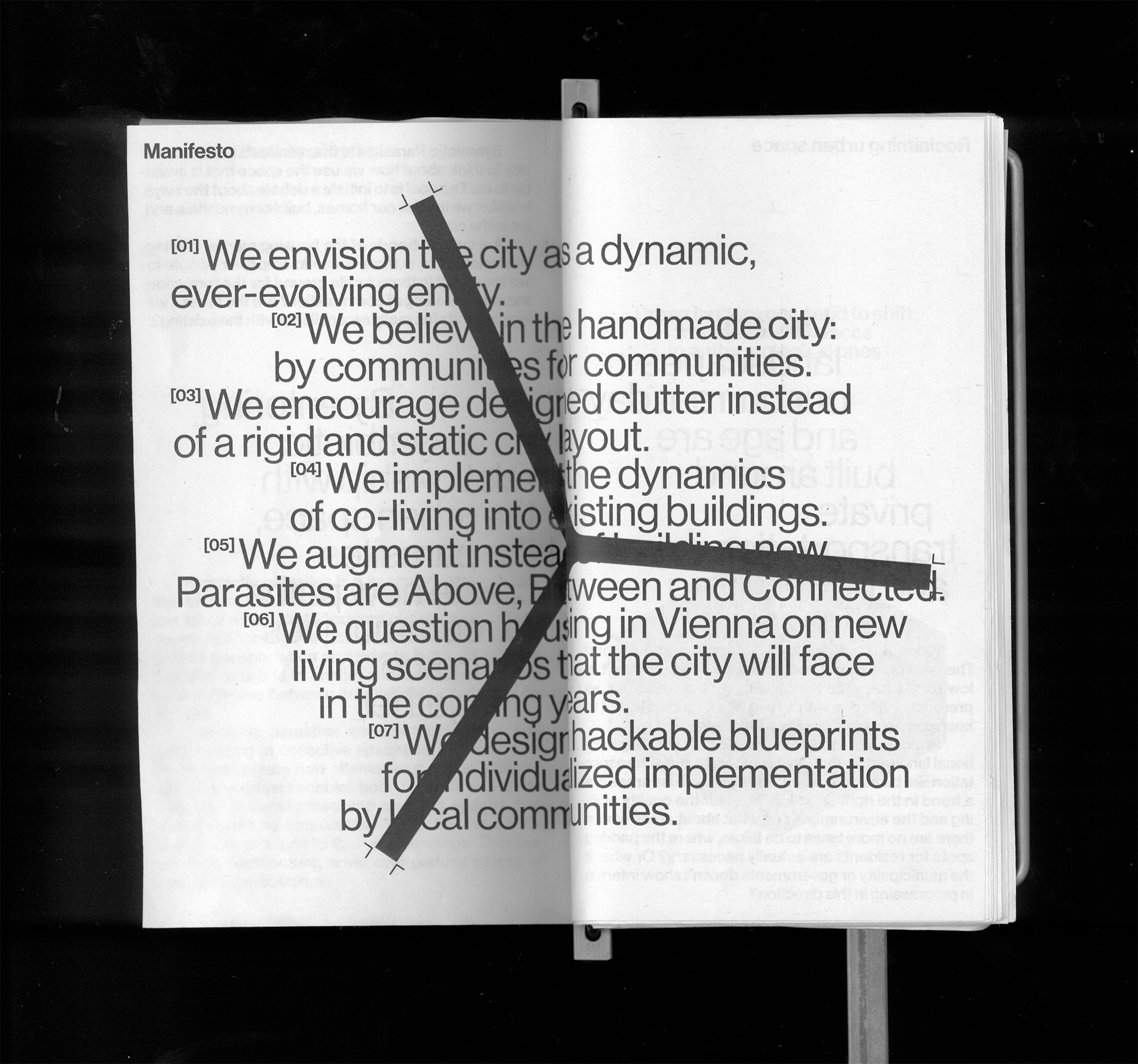
After defining the foundational concept for the structures, we sketched and devised potential solutions that, using readily available construction materials, would serve as an inspirational template for self-construction. Leveraging artificial intelligence, we were able to visualize the envisioned models. Handcrafted architecture emerges as a political gesture, facilitating the reclamation of urban areas and compelling institutions to design public spaces that foster citizen engagement and mitigate social isolation.

Parasitic structures bind to pre-existing frameworks, leveraging their structural properties while extending their functionality. These can be constructed above buildings, nestled between them, or connected to existing structures.

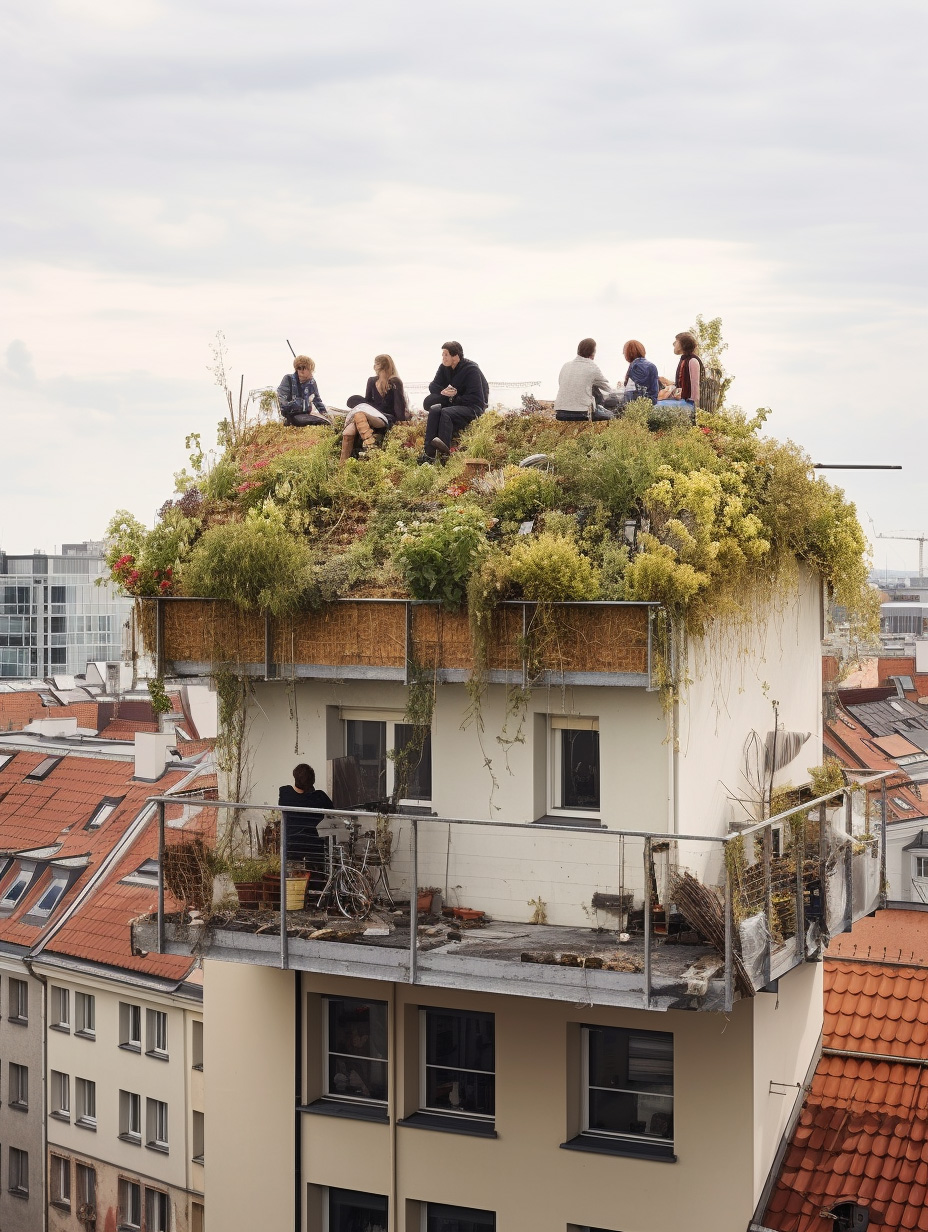

Above
If it’s not possible to move cars underground, why don’t build on top of them?
Structures can be built above anything that occupies public land, making it usable again to the community. The space currently used for parking becomes public space for interaction. Similarly, the roofs of houses, regardless of their shape and slopes can be transformed into habitable areas, following the model of venetian ‘Altane’.
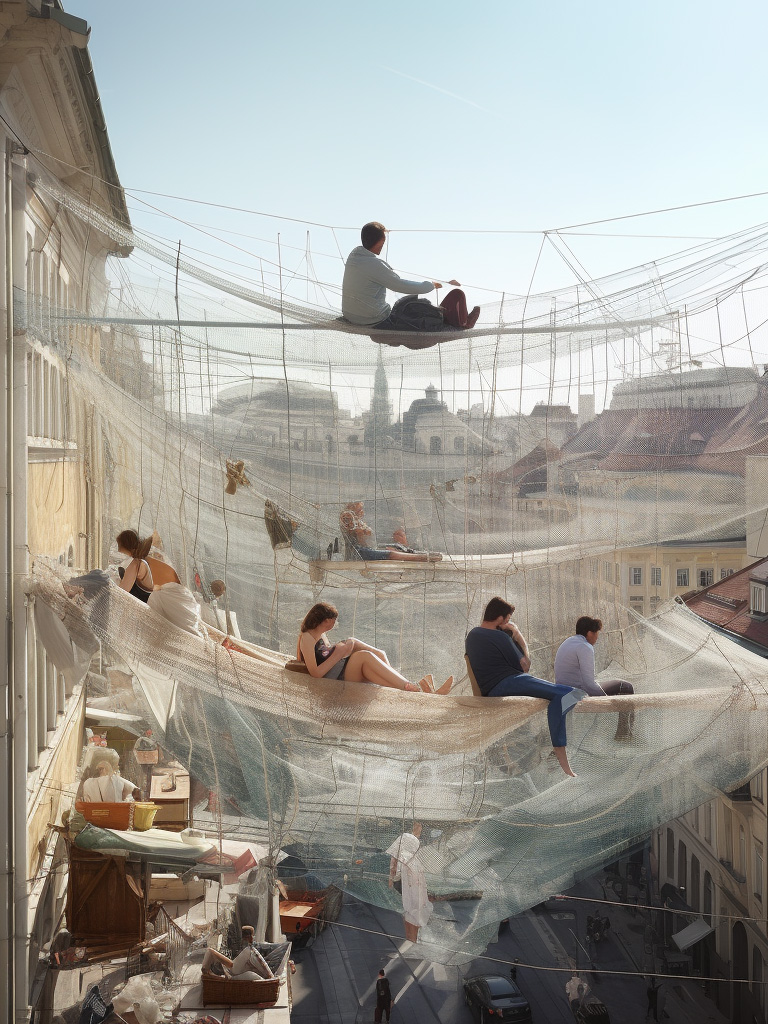

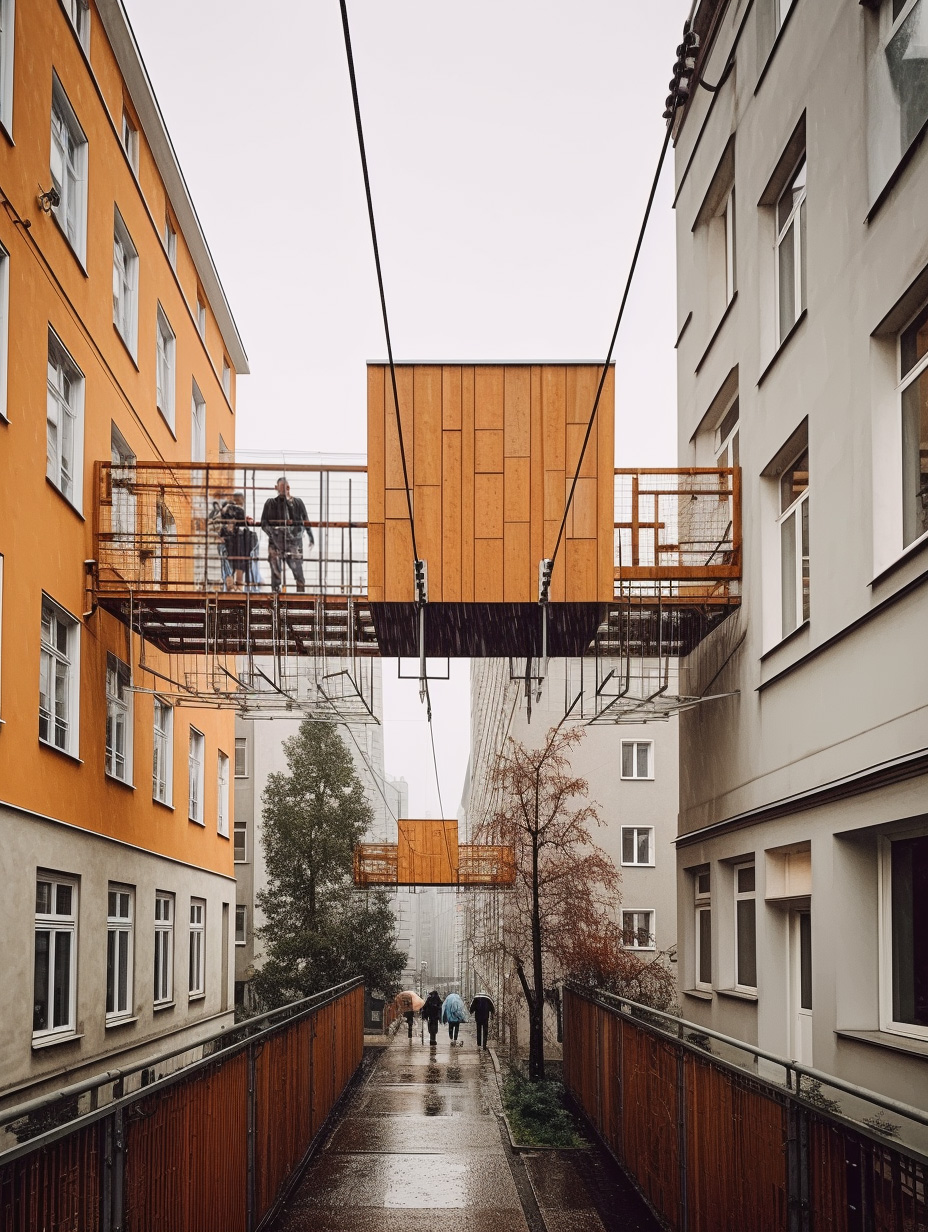
Between
Buildings are increasingly growing in height and becoming self-contained units. The residential dimension becomes more personal, and opportunities for encounters and exchanges with neighbours decrease.
With the same intention as Passage Couvertes, which are accessible passageways to everyone, parasites nestle between two or more buildings through habitable bridges, connecting different living units across multiple levels.
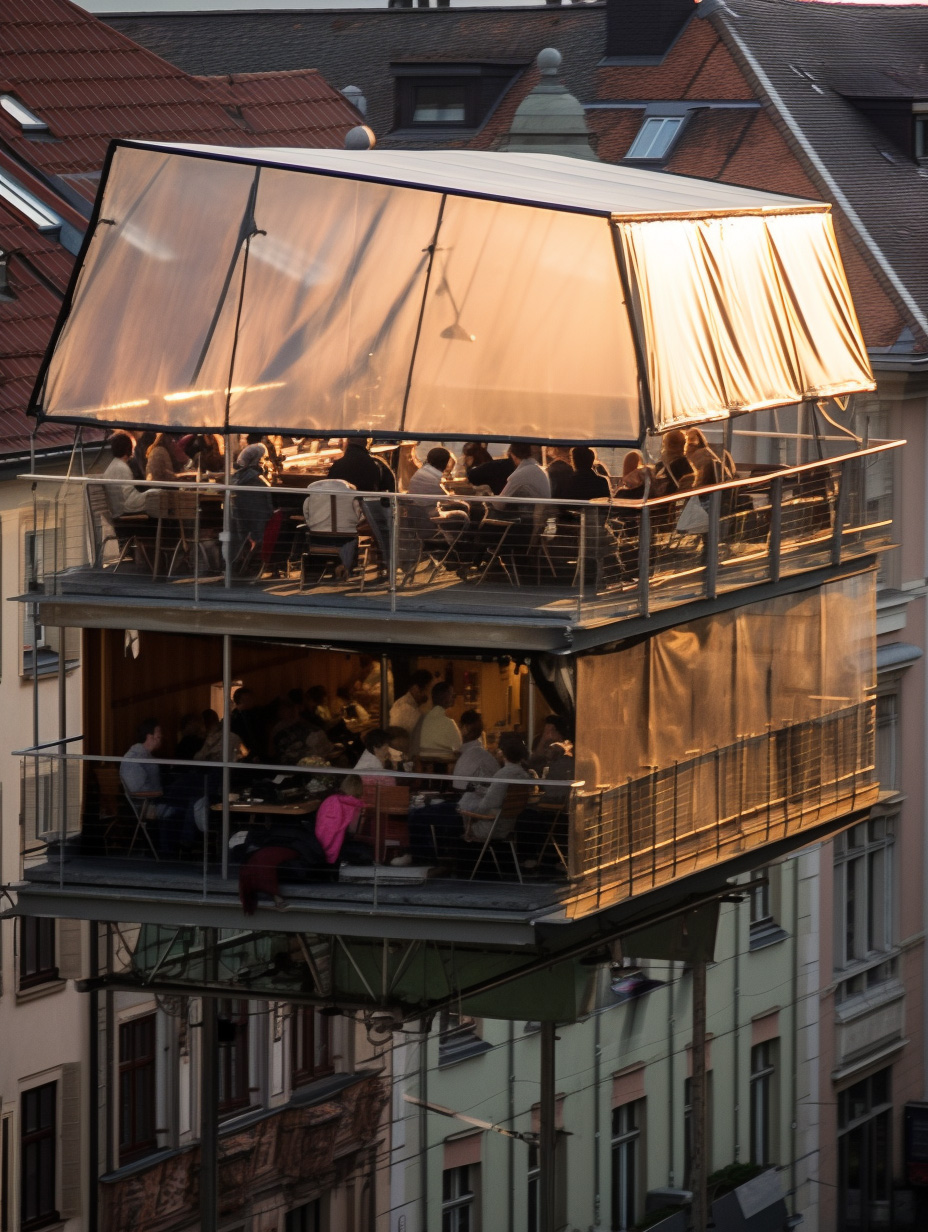


Connected
In the 1960s, the homes of immigrant workers in Milan, the ‘Ringhiera’ houses, were designed to share the perimetral balcony, while providing access to individual dwellings. These types of houses bear witness to a time when sociability and sharing were at the center of design intentions, even for the less affluent classes. Parasites exploit the same concept as ‘Ringhiera’ houses but connect to the facades of existing buildings, enhancing their functionality and creating new spaces for social experimentation.

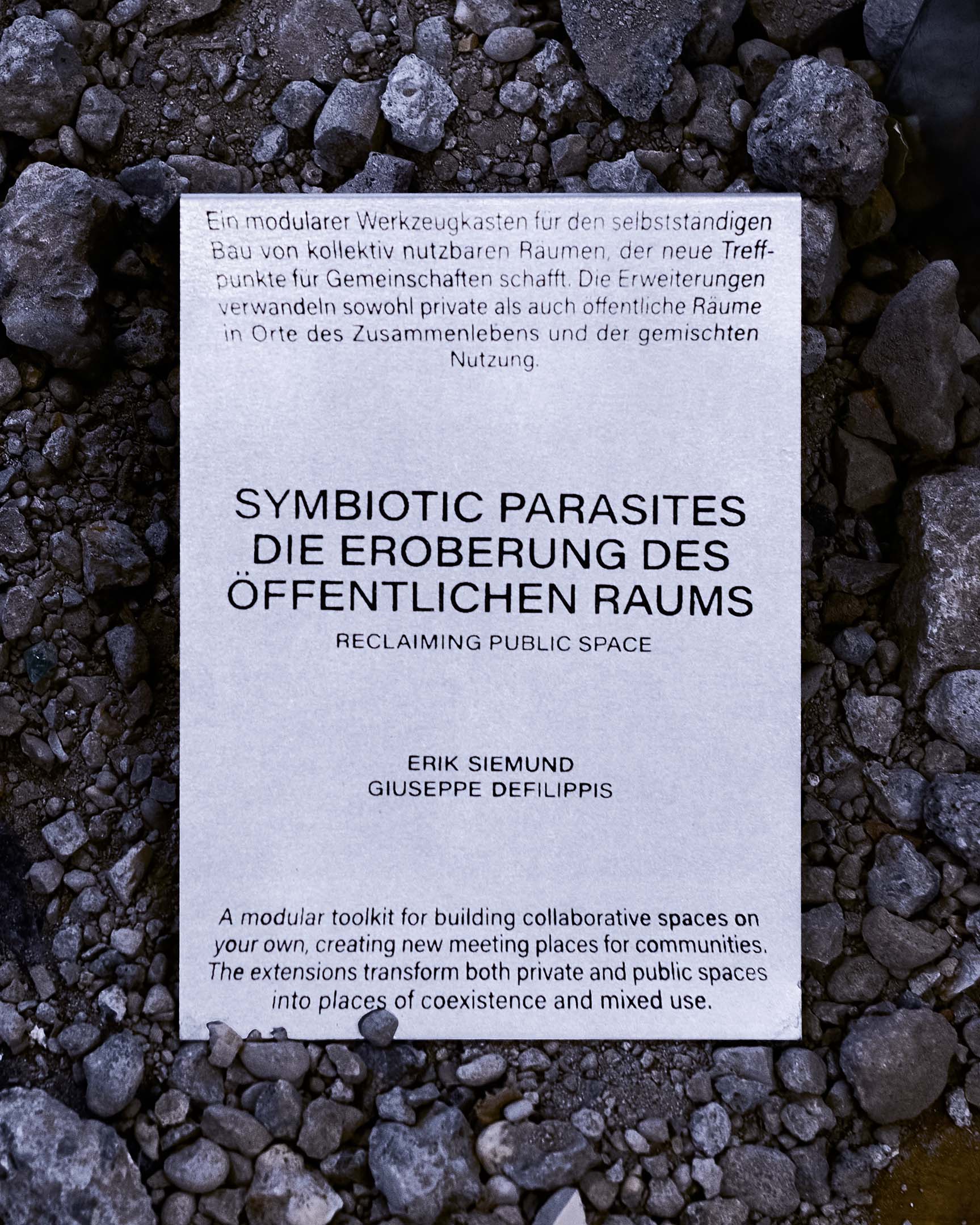

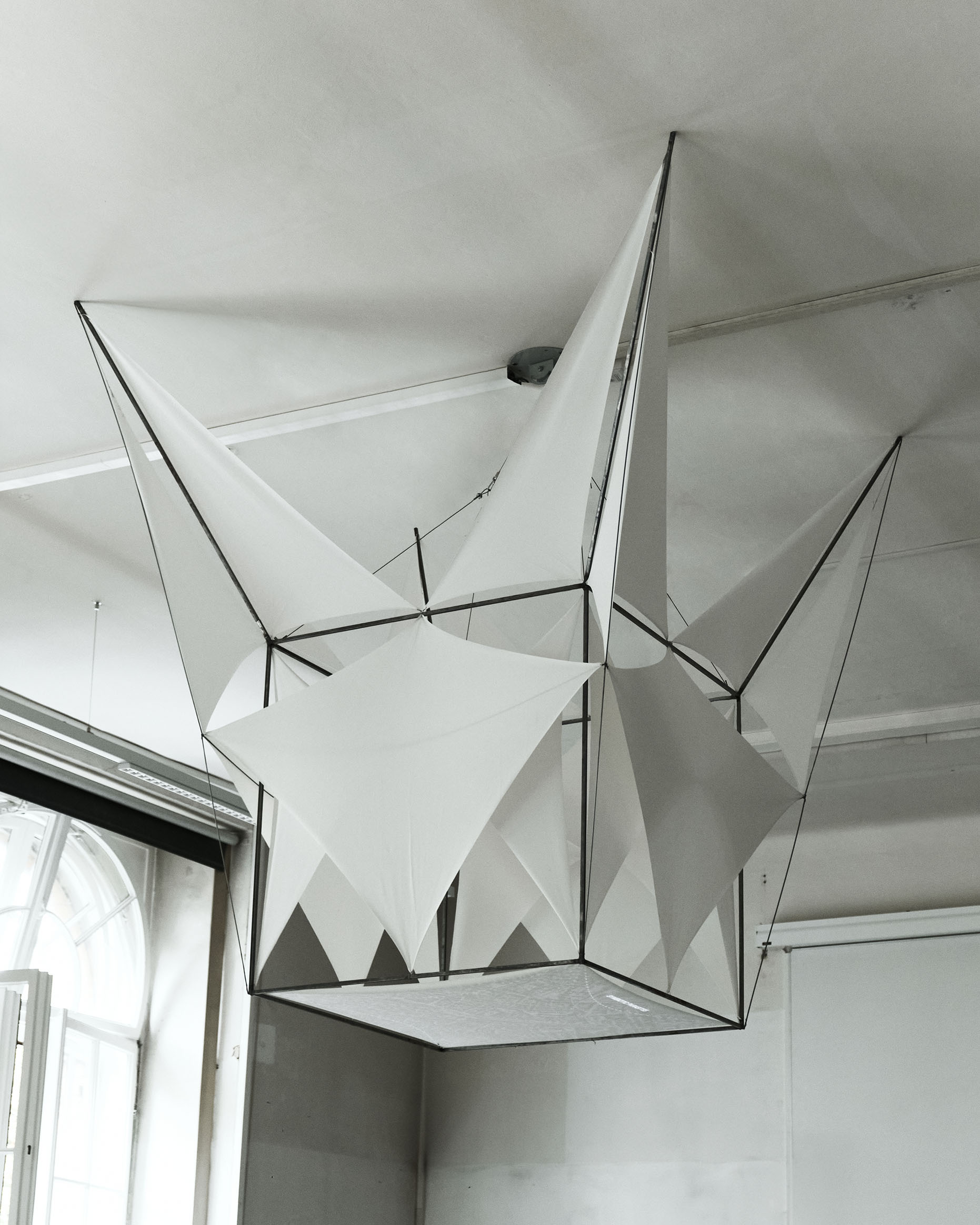

Symbiotic Parasites
Speculative urban exploration
 AI
AI Research
Research
- 2023
- Die Angewandte - Klasse Kartak
- with Erik Siemund
Concept
Symbiotic parasites is a speculative research that investigates the future of urban space. The project envisions bottom-up self-construction of collective spaces to empower communities to create new alternative paths to come together. It imagines a future where both domestic and public areas are actively designed by residents and communities themselves to be transformed into co-living spaces. The add-ons function independently but can scale, extend, and adapt to their surroundings.